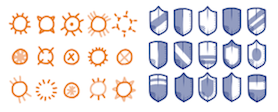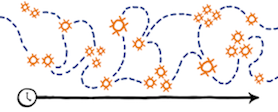Context of the challenges
The impact of environmental factors, including pollution and socio-economic develoment, on the incidence of cancer remains unknown. Countries that have adopted similar socio-economic development models and exposed to comparable environmental situations have different cancerincidences. This underlines the need to refine our models of understanding of the epidemiology of cancers. The consequences of a better understanding of the the evolution of cancers and their causal factors are important both from a medical and a public health point of view, as a result of prioritizing the public health actions that would be deduced therefrom, and better targeting of possible prevention campaigns.
The public recent and massive availability of socio-economic data (economic development, mass consumption), demographic and environmental factors (pollution, exposure to carcinogens, urban planning data) and the development of new approaches to Statistics (machine learning) makes it possible to envisage better predictions of the incidence of the cancers.
By making large data sets widely available and covering the usual epidemiological themes, Epidemium calls on collective intelligence to build models for visualizing and anticipating the spatio-temporal evolution of cancers and thus opens the possibility for all to contribute to the knowledge of the dynamics of cancers and their determinants.


